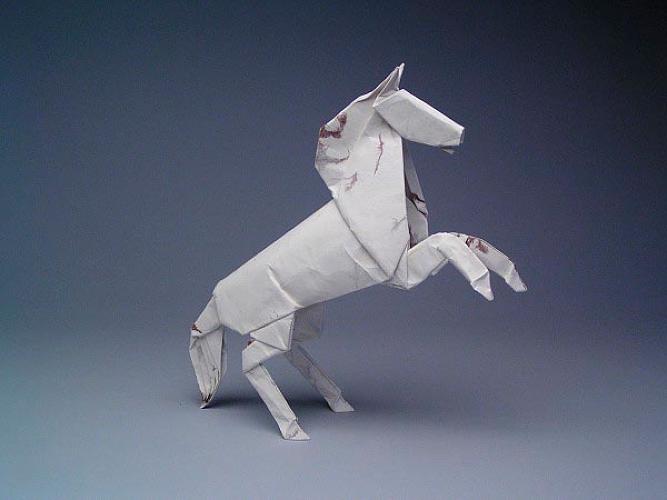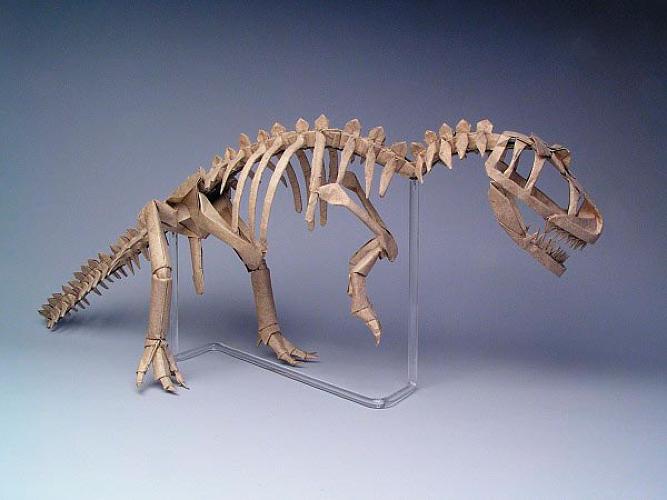Robert J. Lang is a former NASA laser physicist who combines his knowledge of math and science to create origami masterpieces. His pieces are known for their great detail and realism, and they are some of the most complex origami designs ever created.
Lang groups the origami science into three categories:
- Origami Mathematics - This is a subset of mathematics using one of the simplest sets of operations called "Huzita-Justin Axioms." This os set of six (possibly seven?) distinctly different ways to create a single crease by alligning one or more combinations of points and lines expanded with origami geometric constructions that solve for an exact angle quintisection.
- Computational Origami - This is a subset of computer science that uses computational geometry, and the associated algorithms, as a tool for origami design and computations.
- Origami Technology - This is the application of origami techniques to real-world solution making problems in fields like engineering and industrial design. Think: How to fold an car's airbag or folding a telescope.
Using these techniques, Land has been able to create more than 500 original origami compositions using different types of paper and other materials like bronze and self-folding polymers. He has written 14 books on origami and designed origami software offered for free on his website. Lang has sown at some pretty big venues too, including the and the Shumei Hall Gallery in Pasadena, California, Cooper Union in New York, the Santa Fe Botanical Garden in Santa Fe, New Mexico, New York's Fashion Institute of Technology, etc. etc. Currently, over 100 of his pieces are on display at a solo show, Folded, at the Williamson Gallery at the Art Center College of Design, in Pasadena, California.
Here are some of my favorites:.
Stories that include more photographs and videos of Lang's wonderful origami creations:
Robert J. Lang's Origami Website
Fast Company "Art Folds into Science in Robert Lang's Extreme Origami"
Williamson Gallery's Information on "Folded: The Origami of Robert J. Lang"
Science Alert "Behind the science of Robert J. Lang's origami"
Here are some of my favorites:.
 |
| PRAYING MANTIS, OPUS 416 Composed and folded: 2012; One uncut square of paper 4" Image: Emre Ayaroglu/Flickr via Science Alert |
 |
| AEDES AGEYPTI, OPUS 619 Composed and folded: 2012, Commissioned by The New Yorker Magazine c/o Robert Lang via Fast Company |
 |
| THE SENTINEL II, OPUS 627 Composed and folded: 2012; Two uncut squares of Korean hanji, 14" Photo by Susan Karlin via Fast Company |
 |
| ALAMO STALLION, OPUS 384 Composed: 2001, folded 2012; One uncut square of Origamido paper 12" c/o Robert Lang via Fast Company |
 |
| ALLOSAURUS SKELETON, OPUS 326 16 uncut squares of Wyndstone Marble paper 24" c/o Robert Lang via Fast Company |
Stories that include more photographs and videos of Lang's wonderful origami creations:
Robert J. Lang's Origami Website
Fast Company "Art Folds into Science in Robert Lang's Extreme Origami"
Williamson Gallery's Information on "Folded: The Origami of Robert J. Lang"
Science Alert "Behind the science of Robert J. Lang's origami"

No comments:
Post a Comment